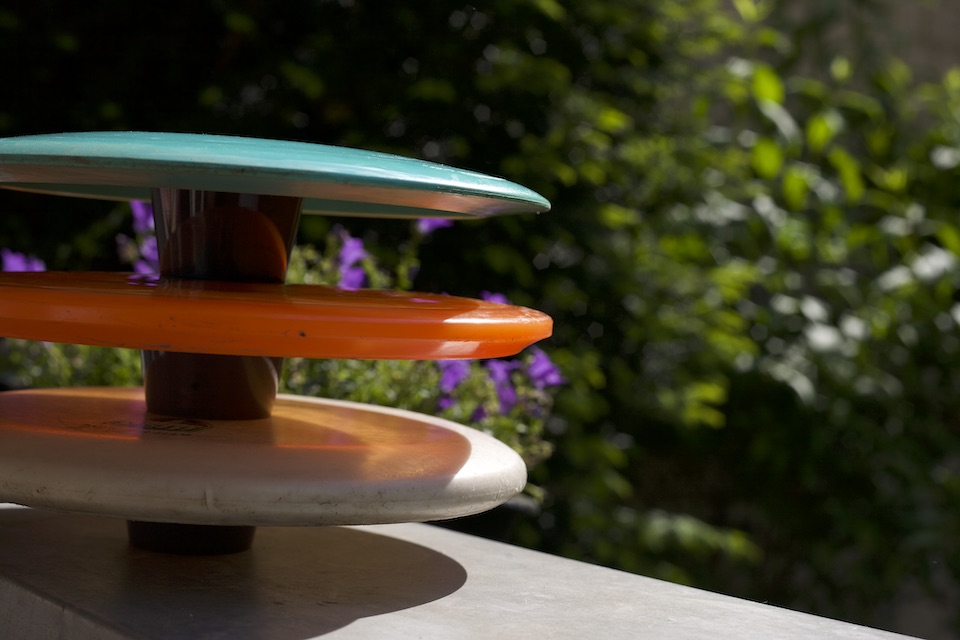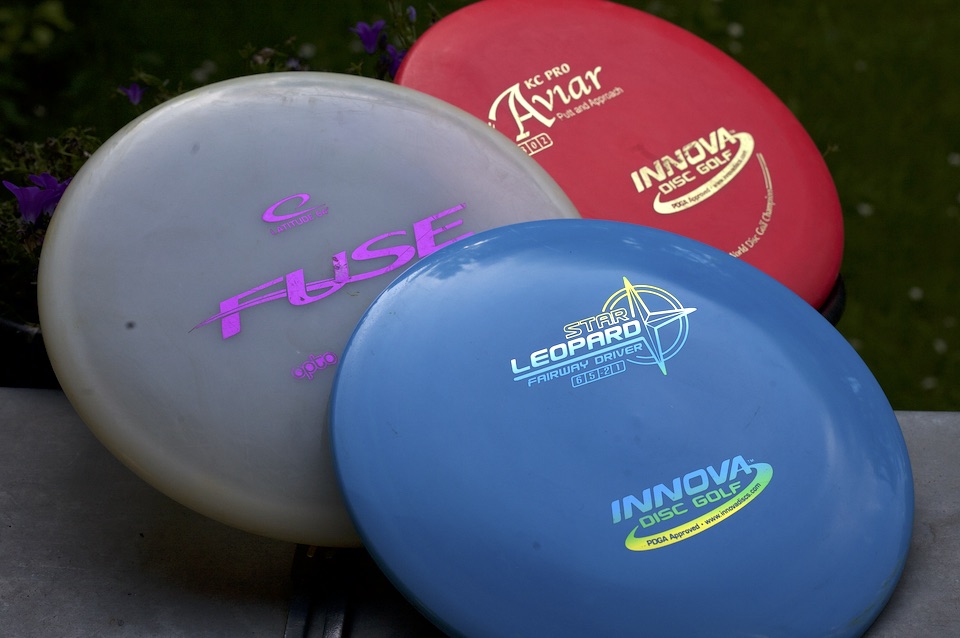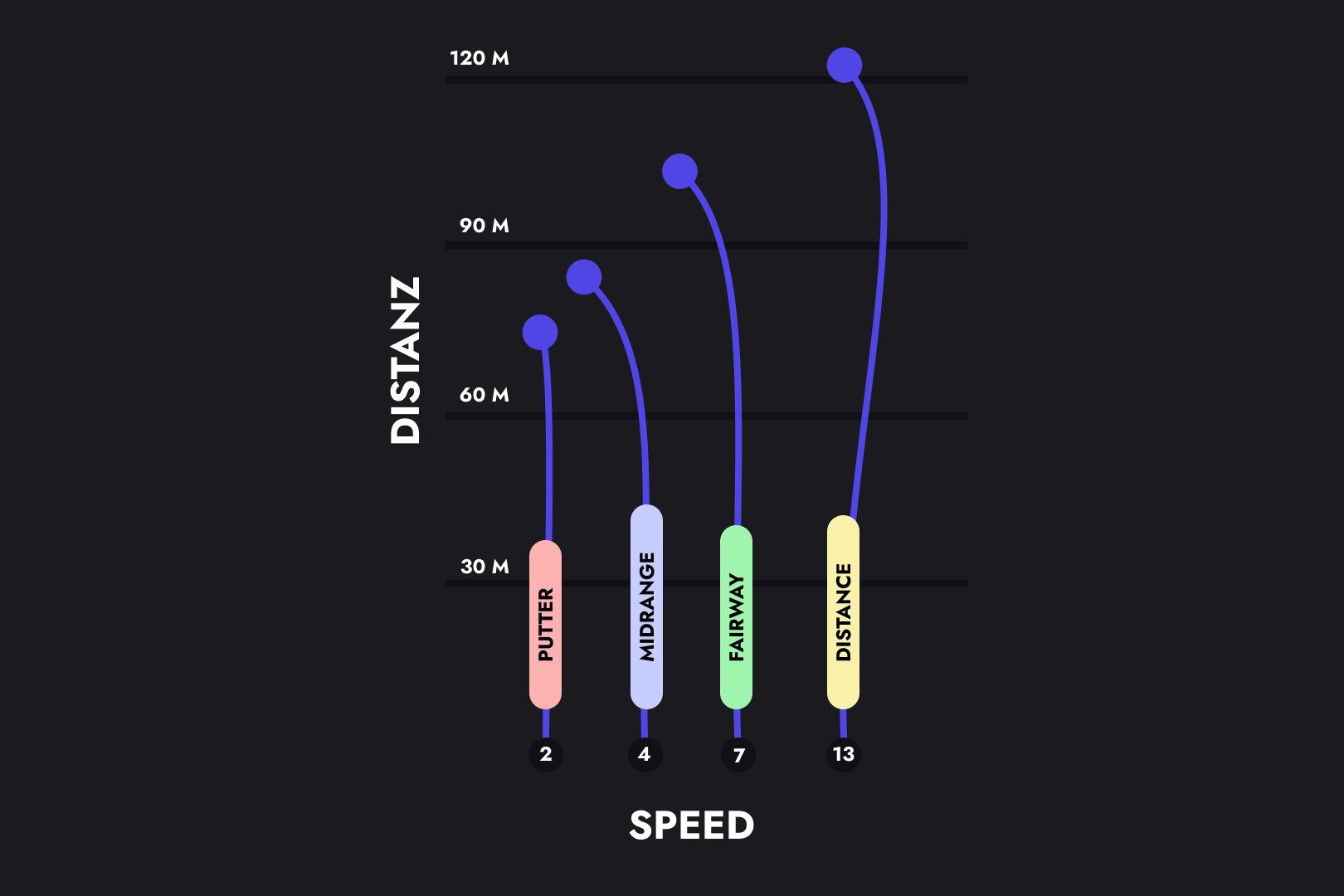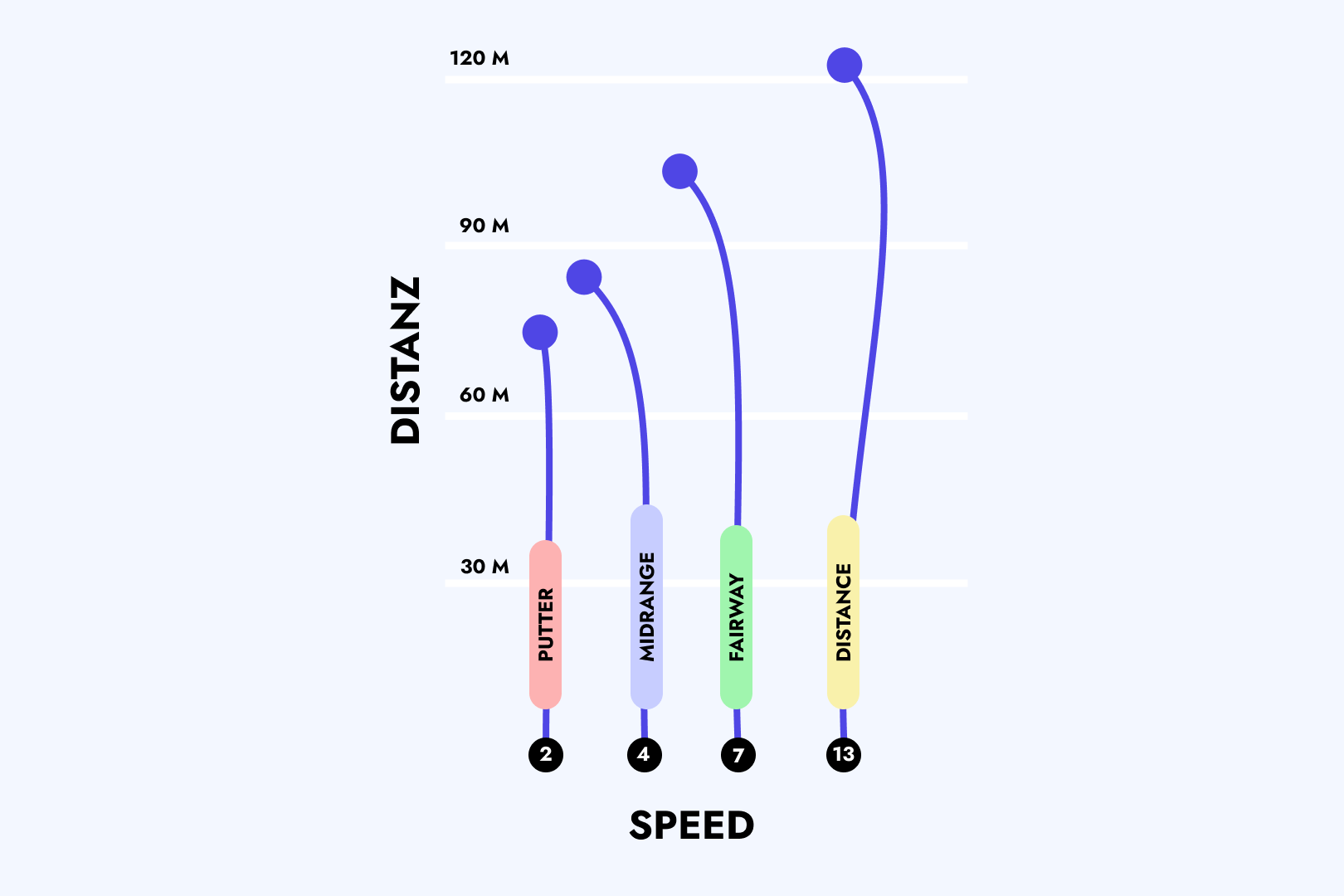For newcomers to the sport of disc golf, buying their first discs can be quite complicated. What should you pay attention to, and what mistakes should be avoided? In this post, we aim to shed some light on the topic and will put together a few beginner sets at the end.
Midrange, Understable, Overmold … please what?
First, let’s clarify a few terms. Generally, there are three types of discs: putters, midranges, and drivers. Of course, this is only half the truth, and advanced players know that there are many subdivisions within these categories. However, for beginners, this can be ignored; you should just understand how these discs differ and their respective advantages and disadvantages.
Just as there are different clubs in traditional golf, there are different throwing devices in disc golf for various distances. Some terms like driver and putter have been adopted, while others are used exclusively in disc sports.

In the image above, you can see these three main discs. At the top in turquoise is a Driver. With its very sharp edge, it is designed to fly quickly through the air and cover distance. The air resistance of these discs is very low; thus, this disc reaches the highest speed. Professionals can achieve distances of over 120 meters, but beginners often struggle to control these discs and get them toward the target.
In contrast, the lower gray disc is much less aerodynamic and should be thrown slowly. However, it can be thrown much more accurately and easily. This type is called a Putter and is used by disc golfers for very short distances.
The orange disc in the middle is the intermediate step between driver and putter and is called Midrange. These discs fly further than a putter, are still very controllable, but do not reach the speeds of a driver.
Putter and midrange are sufficient for starting. Learn to master these discs before buying more.
The graphic above shows the approximate flight curves of the various discs when thrown backhand by a right-handed player. The value at the bottom of the flight curve indicates the speed of the disc. When you shop for discs, you will encounter these numbers again. These specifications for a putter 2|3|0|0 or a driver 7|5|0|2 indicate the approximate flight characteristics of each disc. For now, we will focus on the first value, which indicates the speed of the disc.
For beginners, slow discs (putters, midranges) are easier to control and help learn the mechanics of disc golf. Discs with a speed value below 6 are recommended here. Try to throw these discs 70 meters before diving into the next category (driver). Because fast discs only fly further if you also master the corresponding technique, which most beginners do not have. Therefore, discs with a speed greater than 9 often lead to frustration rather than more birdies in the first months.
In general, “understable” discs are more suitable for beginners. We will skip the details of what this means in this post; the list at the end includes the suitable discs, so you don’t have to worry about that.
Plastic is not just plastic
Cheap discs are made from plastic types that do not have a high durability. Therefore, it is worth spending a few more euros as a beginner and opting for “premium plastic.”

The impact of hits from trees or stones on the discs is visible in this image. The red disc is made from VIP plastic from Westside Discs and shows almost no signs of wear, while the blue putter is made from D-Line plastic (Discmania) and is now very worn. There are also use cases for cheap plastic in discs, but we advise beginners to use premium plastic for discs with a speed rating greater than three.
How many discs do you need at the beginning?
Depending on how high your budget for this new hobby is, we recommend starting with two to four discs. One putter for the final throw into the basket, which should feel good in your hand. Additionally, a putter made from premium plastic for approaches from 20 to 60 meters. If you want to spend a little more money, a midrange and possibly an additional fairway driver would be advisable.
Important: First, learn to master these four discs before buying new ones. Most courses in NRW can be played very well with this manageable set.
Where can I get discs now?
There are various ways to buy discs, and it is worthwhile to compare different options. Ask other players in your local disc golf community if they have used discs for sale. Often, experienced players are willing to sell or trade their old discs cheaply.
Also, check our price comparison to find the best deals on new discs and compare different shops.
Online platforms like eBay Kleinanzeigen, Facebook Marketplace, and disc golf forums can also be good sources for used and new discs. Attend local disc golf tournaments, where vendors often have a variety of discs for sale. This is a great opportunity to handle discs and see which ones suit your playing style best. By exploring these different options, you can find the best discs for your game while saving money.
Our Suggestions for Beginner Sets
Now we come to our compiled starter sets. Which manufacturer you choose depends on which disc design appeals to you visually and at which shop you want to order. All the brands mentioned below have very good discs that we can recommend without hesitation.
Note: The type of plastic is indicated in parentheses. Manufacturers have various types of premium plastic. This is always just a suggestion that should generally be available.
Innova
- Putter: Aviar (DX)
- Throwing Putter: Aviar (Star)
- Midrange: Mako3 (Star)
- Fairway Driver: Leopard (Star)
Latitude 64°
- Putter: Pure (Zero)
- Throwing Putter: Pure (Opto)
- Midrange: Fuse (Opto)
- Fairway Driver: River (Opto)
Discmania
- Putter: Link (Exo)
- Throwing Putter: P2 (S-Line)
- Midrange: MD1 (C-Line)
- Fairway Driver: Essence (Neo)


